Imagine a stuffed baked potato with everything you can imagine inside of it: cream cheese, real cheese, bacon bits, whatever else you want to put in. Now imagine a hot dog with all the fixins: relish, ketchup, onions, chili sauce, and the list keeps going. Take your hot dog, remove the bun, and put it inside the potato.
I’ve just described what might be the American version of the Kumpir.
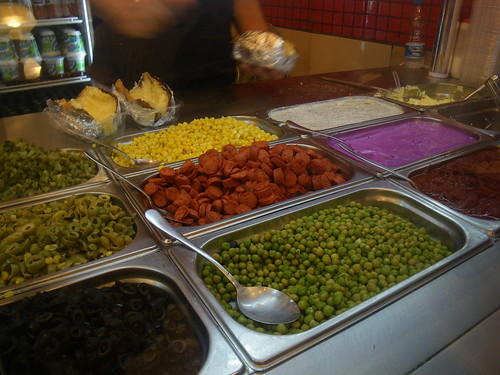 There are a few differences obviously but the general pictures is of a baked potato stuffed with all the goodness you can imagine. Start with your potato wrapped in foil, cut one side and open it up. Next whip shredded cheese and butter into the potato within the potato’s skin. Now add whatever else you can imagine being cooked in a Mediterranean kitchen. Our options were as follows: Yogurt sauce, beet sauce, chili sauce, peas, couscous, chopped hot dog, corn, pickles, black olives, green olives, shredded chicken, potato salad, and the list goes on. Once you’re done making choices go ahead and add some ketchup or mayonnaise and enjoy with a spoon.
There are a few differences obviously but the general pictures is of a baked potato stuffed with all the goodness you can imagine. Start with your potato wrapped in foil, cut one side and open it up. Next whip shredded cheese and butter into the potato within the potato’s skin. Now add whatever else you can imagine being cooked in a Mediterranean kitchen. Our options were as follows: Yogurt sauce, beet sauce, chili sauce, peas, couscous, chopped hot dog, corn, pickles, black olives, green olives, shredded chicken, potato salad, and the list goes on. Once you’re done making choices go ahead and add some ketchup or mayonnaise and enjoy with a spoon.
Since you’re curious here is what each of us had in ours:
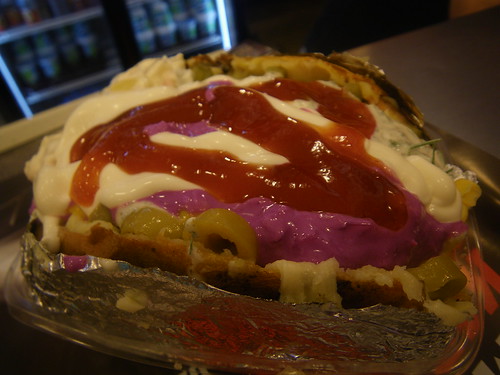 Me – Everything but beet sauce, olives, and chicken.
Me – Everything but beet sauce, olives, and chicken.
Jillian – Chili Sauce, corn, pickles, green olives, couscous, shredded chicken (unorthodox) and that’s about it. She refused, understandably, to put potato salad on a potato. (which was interestingly referred to as American Salad)
To all friends and family, this has the potential of becoming a staple of our future Fourth of July celebrations. That is if Jill lets me, of course. Editors Note: Jill says no.
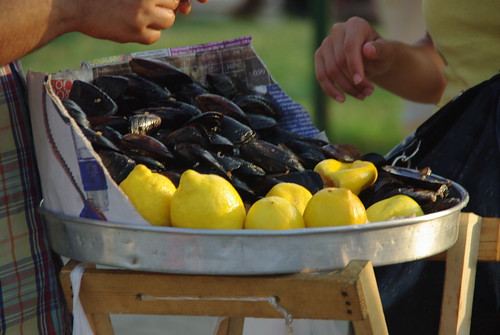
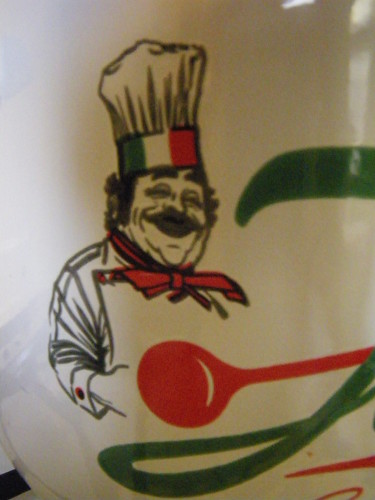



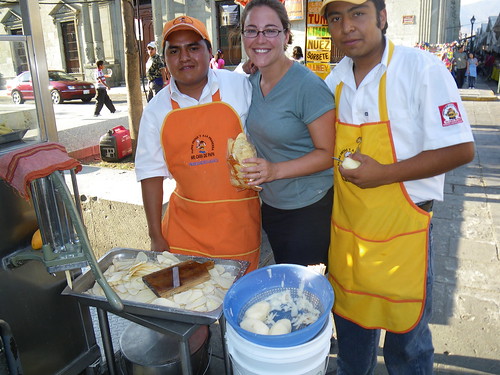


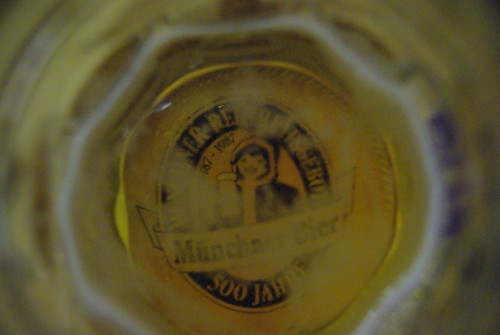
Recent Comments